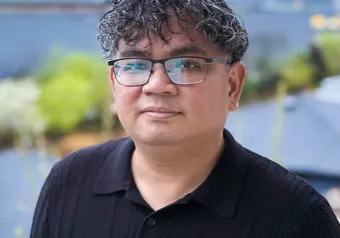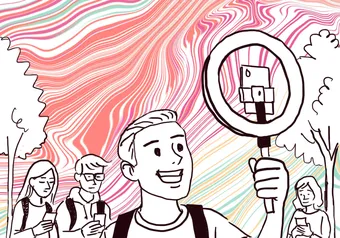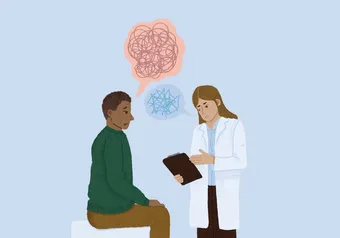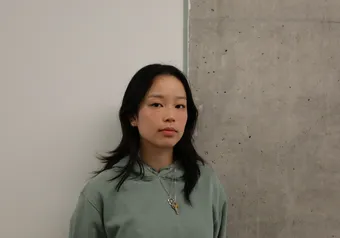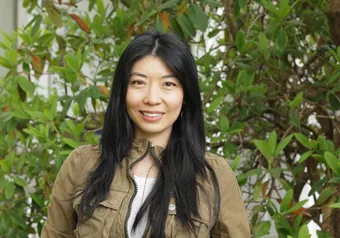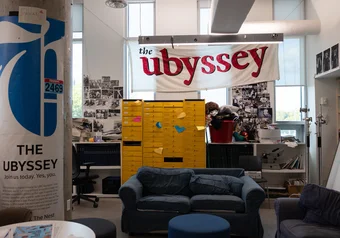As students walked across the stage during a May 2012 commencement ceremony, the crowd burst into an applause that was decades in the making.
This applause was unique — it wasn’t just to celebrate graduation, but to recognize 76 Japanese Canadian UBC students who were forced into internment camps in 1942 before they could complete their degrees.
In total, 22,000 Japanese Canadians along the West Coast were forcibly evicted from their homes — a violation of their citizenship rights — and some were sent to these camps between 1942 and 1949 following the bombing of Pearl Harbor.
This ceremony came a year after the UBC Vancouver Senate approved a motion to grant these 76 students honorary degrees following years of advocacy, led by Mary Kitagawa, to get recognition from UBC about its complicity in the internment process.
Kitagawa, an activist who was interned herself, but not among the students interned in 1942, started calling on UBC to grant interned students honorary degrees in 2008 after she read the University of Washington had done the same.
For three years, Kitagawa was met with indifference from UBC, who initially said the small number of Japanese Canadian students impacted by internment didn’t warrant honorary degrees.
However, in 2012, some students of the 76 interned walked across the stage to get their degrees. The remaining students — who had died before the ceremony or who were unable to attend — were represented by family members.
Among the clapping masses was Dr. Chris Lee. He was watching a generation of Japanese Canadian university students get their degrees, 70 years after internment started.
“The emotion of seeing the leadership — the university — on stage and recognizing this past was really important,” said Lee.
As the 10 living students got their degrees, the Chan Centre erupted into applause, said Lee.
“Everyone was standing, so we actually can’t see what’s happening on stage, [but] apparently after the first students curled around and went back to the back [of the stage] everybody just started weeping,” he said.
For Lee, seeing the students and their family members on the stage was “incredible.”
“It was really seeing those students on stage that made everything make sense all of a sudden … that the past can be acknowledged, that we can actually do things in the present to begin to mitigate the hurts of the past … and that we have to commit to doing that,” he said.
Besides granting the 76 previously interned students with their degrees, the Senate approved two other motions — one committed UBC to develop initiatives to educate future students on the history of internment and the other committed the UBC Library to preserve historical records from the time of internment.
The first motion eventually became the Asian Canadian and Migration Studies (ACAM) program — a multidisciplinary, 18-credit minor that explores the history and culture of the Asian diaspora in Canada and Asian migration around the world.
The beginning
The ACAM program officially launched in fall 2014, three years after the Senate voted to develop educational resources on anti-Asian racism.
It was the third Asian Canadian-focused program in Canada. SFU created its program in the 1990s — although it has been suspended since 2017 — and the University of Toronto launched its version shortly before UBC.
Lee, now the ACAM director, said the three-year gap was, in part, a result of bureaucratic processes.
“All bureaucratic processes take way longer than we ever think they do,” said Lee. “Going to the Senate with the Faculty of Arts, and then going to the provincial government, that took a long time.”
The program developers — people like Lee and history professor Dr. Henry Yu — brought a motion regarding the creation of the ACAM program to the Senate in spring 2014.
Developers found there were few existing courses related to Asian Canadians and migration that could be used as graduation requirements for the program. According to Lee, there were only two related classes — a multicultural film course and a history of Asian migration course taught by Yu.
“There was actually so little infrastructure that in some ways … we kind of created a structure for what would be a minor in ACAM,” Lee said. “I spent the first three to five years [as the ACAM] director really taking that apart and really building it.”
Lee also said the lengthy program development time was due to a conscious effort to include community consultations in the development process.
He said these consultations relied on existing relationships between those developing the ACAM program (like Lee and Yu), those who organized the 2012 ceremony for the 76 Japanese students and local community members. These consultations, according to Lee, revealed the diversity within the Asian Canadian community around the best ways to educate on anti-Asian racism.
“The range of ways in which a university can be responsive to and responsible to diverse Asian Canadian communities, I think that really came about in a very clear way during consultation,” Lee said.
This focus on community engagement continued even after the creation of the ACAM program — many ACAM courses involve assignments that have students work with local communities.
“Because of its origins … I think we knew that the program had to be responsive to community needs from the very start,” Lee said.
‘On the shoulders of many, many other people’
The creation of ACAM came from the Senate’s call to action to educate students on and preserve documents of internment, but Lee said it also fits within a broader context of Asian presence at UBC and in Vancouver.
Asian settlers, predominantly Chinese workers on the Canadian Pacific Railway, have lived in the Lower Mainland since the late 19th century — although the first recorded Chinese settlers in BC arrived in 1788 on Vancouver Island.
For much of this time, widespread anti-Asian racism discriminated against and targeted these immigrants, and this discrimination continues today.
“UBC was part of that system [of anti-Asian racism], but also a place where a lot of students of Asian descent gravitated to,” Lee said. He noted a Japanese Canadian student, Tose Uchida, was part of UBC’s first graduating class in 1916 when the university was known as McGill University College of BC.
Uchida was UBC’s first Asian Canadian and Japanese graduate.
It was this history, and UBC’s ties to it, that motivated people like Lee, Kitagawa, Yu and others to advocate for educational resources on anti-Asian racism and Japanese internment in 2011.
“That’s a very important component because I find a lot of people in Canada do not know that such a horrible event happened,” Kitagawa told The Ubyssey in November 2011.
Despite the lack of a formal program, Lee said students and faculty have been discussing the “Asian Canadian experience before [they] even had a language for it.”
“People have been trying to do teaching and research and learning about Asian Canadians for many decades now, but often without the necessary spaces and resources,” he said.
Lee said the work of these people “catalyzed” the founding of the ACAM program by creating a network of alumni and community members who knew that education was an important tool to address anti-Asian racism and providing example frameworks for the program.
He also pointed to the First Nations and Indigenous Studies program at UBC as “instrumental” in helping developers create the ACAM program due to its longer history of teaching about histories of racism and empire in connection to local communities.
“I’m always aware that for every little bit of work that we do in ACAM, we really are on the shoulders of many, many other people who’ve been doing this work for many years,” Lee said.
‘A story about us’
Carolyn Nakagawa was working on a research project for Lee in the summer of 2014 when she said he asked to see her transcript to see if she was eligible to graduate with the ACAM minor at the end of the academic year.
After spending a gap year in Japan, Nakagawa took some 300-level Japanese language courses earlier in her undergrad — courses Lee said counted for ACAM credit. She was also already signed up to take two English courses that counted for the minor since she was an English honours student.
After looking over her transcript and talking with Lee, Nakagawa also signed up for a history course. That course would grant her the ACAM minor.
“[The history course] was really an extension of the summer research work I was doing, as well as a really good supplement to [my Asian] diaspora literature coursework and to my thesis,” she said. “It was a no-brainer.”
When she started at UBC in 2010, Nakagawa didn’t know she would end up enjoying studying the Asian diaspora — she didn’t even have a major picked out. But, she said she’s glad that the ACAM program started when it did.
“I was just letting my interests guide me,” said Nakagawa. “I was fortunate enough that I was working with Chris Lee, and that the program was starting just in time for me to be able to get involved.”
Nakagawa was one of four students to graduate in the inaugural class of ACAM minors in 2015. Now, the program has around eight graduates each year.
The ACAM program has grown since its inception — for example, courses under the ACAM code didn’t exist until 2017, according to Lee. Now, classes like ACAM 320B on Asian diaspora health and ACAM 350 on Asian Canadian media regularly fill up each year.
Lee compared the growth of the program to building a house.
“Thinking about the kind of house metaphor, we build a house that we’ve kind of lived in for the last 10 years that does certain things,” he said. “But the demand for ACAM work and the need for ACAM work, I think, exceeds what the house can carry.”
Even after nine years, many ACAM students seem to find the same value in the program’s courses.
“Learning about diaspora felt very familiar and helped me understand my own lived experience in a very different way,” said Nakagawa.
Shih-wei Wang, a fifth-year English literature and Asian language and culture student, echoed Nakagawa’s comment.
“A lot of courses in Asian studies, while they’re very fun, it’s almost like studying about Asian culture through Western discourse,” Wang said. “[ACAM] was so curated towards the Asian immigrant experience or the Asian diasporic experience. It wasn’t ethnographic ... it was a story about us.”
Wang added that her ACAM classes allow her to explore her racial identity and connect with her heritage — something she didn’t have the opportunity to do before. She also said ACAM courses gave space for her and others to share their mutual experiences — both good and bad — as part of the Asian diaspora.
“It’s not always about how upsetting the immigrant life is,” said Wang. “It’s about sharing the kinds of food that your mom makes that makes you really happy, sharing that moment when you haven’t seen your grandparents in a long time.”
Both Nakagawa and Wang also mentioned the importance of learning about the history of anti-Asian racism, especially in Vancouver.
“There’s been these diasporic communities in Vancouver for decades,” Nakagawa said. “I think the more opportunities we have for UBC students to discover that type of story as part of the coursework, the better.”
Celebrations with community
Nakagawa and Lee were sitting in the St. John’s College dining room on the evening of May 8, 2015 for an ACAM graduation celebration.
The red brick walls were obstructed by balloons strung up around the room, and the curtains were drawn behind the podium, blocking out the light from outside.
One by one, each graduating student went up to the podium to speak before receiving a goodie bag from Kitagawa and taking photos to commemorate their graduation.
The large dining room might have seemed too big to hold the program’s four graduates, but members and elders of the Asian Canadian community outside of UBC attended the gathering to celebrate the “well-valued” Class of 2015, said Nakagawa.
The buzz of graduation excitement and celebration didn’t solely come from the ACAM grads, but also from the community that surrounded them.
“It really felt like the broader community was embracing us,” said Nakagawa. “Even people I had not met before that day were there to support me.”
A previous version of this story misstated that 23,000 Japanese Canadians were interned, instead of 22,000. The Ubyssey regrets this error.
First online
Share this article



